5. Mars seems to be
navigating towards Gemini.
... Ancient people were fascinated with
the periodic backward
loops turned by Mars every two years ...

Maybe Mars received his great powers from the Pleiades, making
him speed up again in the right direction towards April.
... Skanda
(literally 'the jumping one' or 'the hopping one') is the planet
Mars, also called Kartikeya, inasmuch as he was borne by
the Krittika, the Pleiades.
Mbh. 9.44-46 (Roy trans. vol. 7, pp. 130-43). It should be
emphasized, aloud and strongly, that in Babylonian astronomy
Mars is the only
planetary representative of the Pleiades.
See P. F. Gössmann. Planetarium Babylonicum
(1950), p. 279: 'In der Planetenvertretung kommt für die
Plejaden nur Mars in Frage.'
... The star cluster
Krittika ...
sometimes known as
Kārtikā, corresponds to
the open star cluster
Pleiades in Indian
astronomy and
Jyotisa (Hindu
astrology). The name
literally translates to
'the cutters' ...
In
Hindu mythology, the god
Murugan (Skanda / Subrahmanya / Kartikeya)
was raised by the six
sisters known as the
Krttikā and thus
came to be known as
Kārtikeya (literally
'Him of the Krttikā').
According to the
Mahābhārata, Murugan
was born to Agni
and
Svāhā, after the
latter impersonated six
of the seven wives of
the Saptarsi and
made love to him. The
Saptarshi, hearing
of this incident and
doubting their wives'
chastity, divorced them.
These wives then became
the Krttikā ...
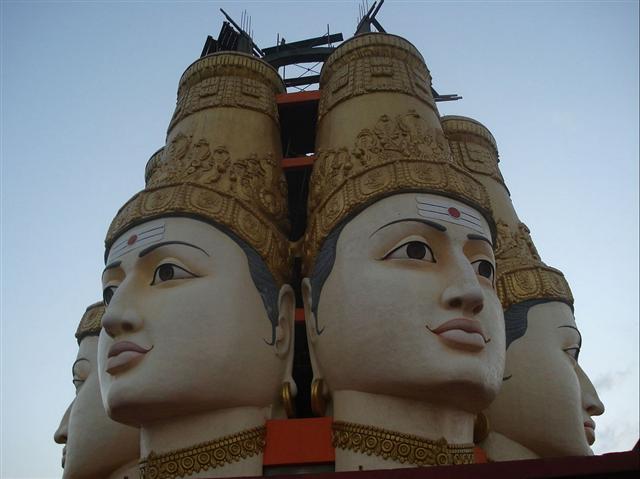
If you are running quickly ahead you
surely will have your face oriented in the forward direction. Presumably the many faces of Murugan (alias the planet Mars)
were visualizing
how his direction ahead was turning around.
We ought to investigate how
- according to Cartes du Ciel - the oribit
of Mars close to the Pleiades currently is being developed. Is the current view similar
to that in the diagram above? It covers the nights from August 23
(235) up to and including April 19 (109), i.e. 240 days:
|
Aug 23
(235) |
74 |
Nov 6
(310) |
55 |
19 |
Jan 20
(20) |
88 |
April 19 |
|
75 |
56 |
108 |
|
240 |
Maybe in April 19 of this year the planet Mars will be at the star
Mekbuda (Contracted),
given that he will be at Mebsuta (Outstretched) 5 days
earlier as has been projected:

 |
 |
 |
 |
 |
 |
 |
|
Eb8-6 (268) |
Eb8-7 |
Eb8-8 |
Eb8-9 |
Eb8-10 |
Eb8-11 |
Eb8-12 (600) |
|
te kahi |
kua oho ku tutu |
koia - e ua |
huki ma te papamea |
hoko huki erua |
|
Kahi. Tuna; two sorts:
kahi aveave, kahi matamata. Vanaga. Mgv.:
kahi, to run, to flow. Mq.: kahi, id.
Churchill. Rangitokona, prop up the
heaven! // Rangitokona, prop up the
morning! // The pillar stands in the empty
space. The thought [memea] stands in the
earth-world - // Thought stands also in the sky.
The kahi stands in the earth-world - //
Kahi stands also in the sky. The pillar
stands, the pillar - // It ever stands, the
pillar of the sky. (Morriori creation myth
according to Legends of the South Seas.)
Tutu. 1. Circle of fishing nets
arranged in the shape of a funnels or baskets.
2. To light a fire; he-tutu i te ahi: to
burn something. 3. To hit, to strike, to beat.
Tûtú, to shake (something) clean of dust
or dirt; he-tûtú te oone o te nua, to
shake the dirt off a nua cape. Tutuhi,
to reject the responsibility for a mistake onto
one another, to blame one another for a mistake
(see tuhi). Tutuki, to stumble, to
trip. O tutuki te va'e, in order not to
trip. Tutuma, firebrand, partly burnt
stick. Tuturi, to kneel. Vanaga. 1. To
beat bark for cloth. PS Pau., Mgv., Mq., Ta.:
tutu, id. Sa., To., Fu.: tutu, id. 2.
A broom, to sweep, to clean. Mq.: tutu,
to beat out the dust. 3. To shake, to winnow.
Mgv.: tutu, to tremble, to leap. Mq.:
tutu, to shake. 4. To kindle, to light, to
ignite, to set fire, to burn. Mq.: tutu,
to burn, to set fire. 5. To stand; hakatutu,
to set joists. P Mgv., Mq.: tutu, to
stand upright. Ta.: tu, id. Tutua
(tutu 1): board on which bark is beaten
into cloth. PS Mgv.: tutua, a cloth
beater. Mq., Ta.: tutua, wood on which
cloth is beaten. Sa., Fu.: tutua, id.
Tutui: tutui ohio, chain, tutui
kura, shawl. Mq.: tuitui kioé, chain.
Tutuki: shock, contusion, to run against,
to collide; tukukia, to run foul of. P
Pau.: tukituki, to strike, to pound, to
grind. Mgv.: tukia, to strike against,
shock, concussion. Mq.: tutuki, id. Ta.:
tui, id. Tutuma: 1. (tutu -
ma) a live coal. 2. Tree trunk T (?
tumu). Tutumata, ligament of the eye,
orbit, eyelid. T (tutumate, eyelid G).
Tutuu, bristling. Churchill.
Papa. 1. Underground rock;
motionless; rocky sea bottom; large flat stone;
figuratively: tagata papa important man,
author of great works. 2. Wooden plank currently
used much like a surf-board in the sport called
garu; it was formerly called papa
gaatu mo te garu, because it was made from
dry totora leaves woven into the shape of
a plank. 3. To line up things side by side on a
flat surface, for instance, to line up fish on
top of a flat stone. Vanaga. Shoulderblade.
Papapapa, a chill, to shiver, to tremble, to
shudder. Churchill. |
|
July 1 |
2 |
3 |
4 (185) |
5 |
6 |
7 (188) |
|
τ
Puppis (102.2),
ψ7 Aurigae (102.4)
*61.0 = *102.4 - *41.4 |
Mash-mashu-sha-Risū-9
(Twins of the Shepherd)
θ Gemini (103.0),
ψ8 Aurigae (103.2),
ALHENA = γ Gemini
(103.8),
ψ9
Aurigae (103.9) |
ADARA (Virgins) = ε Canis Majoris
(104.8) |
ω Gemini (105.4),
ALZIRR (Button) =
ξ
Gemini
(105.7),
MULIPHEIN
(Oaths) =
γ
Canis Majoris
(105.8),
MEKBUDA (Contracted) =
ζ Gemini
(105.9)
*64.0 = *105.4 - *41.4 |
7h (106.5)
No star listed (106) |
WEZEN (Weight) =
δ
Canis Majoris
(107.1),
τ
Gemini (107.7),
δ
Monocerotis (107.9) |
No star listed (108) |
|
→ VISIBLE
CLOSE TO THE FULL MOON: |
|
South Dipper-8 (Unicorn)
Φ
Sagittarii (284.0),
μ
Cor. Austr. (284.6),
η
Cor. Austr.,
θ
Pavonis (284.8) |
SHELIAK (Tortoise) = β Lyrae,
ν Lyrae (285.1), ο Draconis (285.5). λ Pavonis
(285.7)
ATLAS (27 Tauri) |
χ Oct. (286.0),
AIN AL RAMI (Eye of the Archer) =
ν
Sagittarii
(286.2),
υ Draconis (286.4),
δ
Lyrae (286.3),
κ
Pavonis (286.5),
ALYA (Fat Tail) =
θ
Serpentis
(286.6)
*245.0 = *286.4 - *41.4 |
ξ Sagittarii (287.1), ω Pavonis (287.3),
ε Aquilae, ε Cor. Austr., SULAPHAT (Little
Tortoise Shell) = γ Lyrae (287.4),
λ Lyrae (287.7),
ASCELLA (Armpit) = ζ Sagittarii,
BERED = i Aquilae (Ant.)
(287.9)
*246.0 = *287.4 - *41.4 |
Al Na'ām-18 (Ostriches) /
Uttara Ashadha-21 (Elephant tusk, small bed)
NUNKI = σ Sagittarii (288.4),
ζ Cor. Austr. (288.5),
MANUBRIUM = ο Sagittarii
(288.8), ζ Aquilae (288.9)
*247.0 = *288.4 - *41.4 |
19h (289.2)
λ
Aquilae (Ant.) (289.1),
γ
Cor. Austr (289.3),
τ
Sagittarii (289.4),
ι
Lyrae (289.5),
δ
Cor.
Austr. (289.8)
*248.0 = *289.4 - *41.4 |
Al Baldah-19 (City)
AL BALDAH = π Sagittarii, ALPHEKKA (Dish)
MERIDIANA = α Cor. Austr.
(290.1), β Cor. Austr. (290.2) |
 |
|
Dec 30 (364) |
31 |
Jan 1 |
2 |
3 |
4 |
5 (370. *290) |
|
Dec 31 |
Jan 1 |
2 |
3 |
4 |
5 (107 + 182) |
6 (107 + 183) |
.jpg) |
I checked this idea with Cartes du Ciel. However Mars will not have arrived so far:

Trying with April 4 (10 days before 4-14 and 15 days before
April 19) I could not find any star
close to Mars there either.
Instead Mars should be looked for around halfway on his way from M35
to Mebsuta. But
20 days before Mebsuta the planet Mars
would significantly be at March
25 (3-25, 84 = the Julian equinox), i.e. at M35, - and interestingly the star 136 Tauri close by
suggests day 136 (May 16) when the Sun later would rise with Alcyone in
the Pleiades.
... When the Pope Gregory XIII updated
the Julian calendar he did not revise what had gone wrong
before 325 AD (when the
Council of Nicaea was held). Thus the stars were still
3-4 days 'out of tune' compared to the calendar ... the
Gregorian 'canoe' was 'crooked'. His calendar was not in
perfect alignment with the ancient star structure. Because
he had avoided to adjust with the effects of the precession
between the creation of the Julian calendar and the Council
of Nicaea in 325 A.D. [The Julian equinox was in the 3rd
month of the year and in its 25th day; 3-25.]
...

M45, the
Pleiades group, would rise and go down earlier:
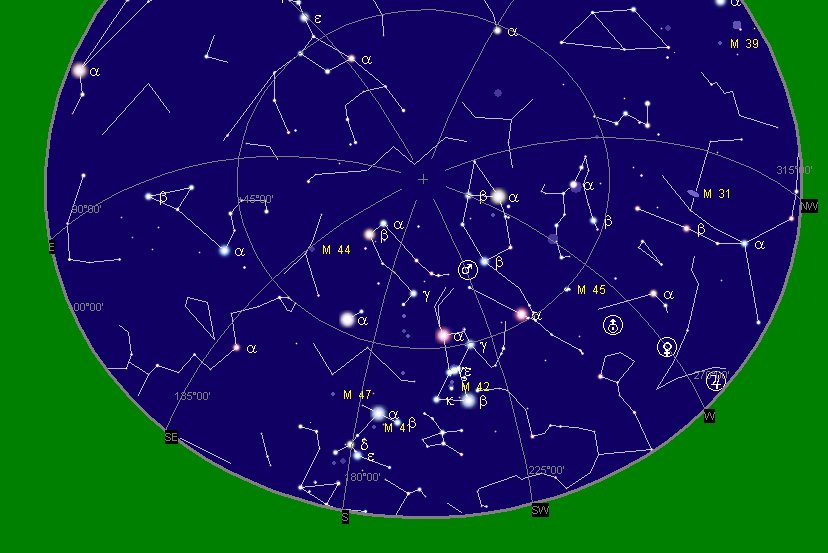
When was Mars at or close to M45? After repeated trials I think
we can fairly say that his closest approach was in the nights
around January 20. It looks as if Mars in this day was at the
right angle (90º) formed between
the directions to M45 and Hyadum I:

|
Aug 23
(235) |
74 |
Nov 6
(310) |
55 |
19 |
Jan 20
(20) |
83 |
April 14
(20 + 84 = 104) |
|
75 |
56 + 19 = 75 |
84 |
|
150 |
85 |
|
235 = 160 +
75 |
We have now verified that Mars also in AD 2023 would
have been close to the Pleiades in the period from about January 5
(370) to February 4 (35, 400), where he had completed
his retrograde circuit beginning in November 6 (310):

... The Sacred Book of the ancient Maya
Quiche, the famous Popol Vuh (the Book of Counsel)
tells of Zipacna, son of Vucub-Caquix (= Seven Arata). He
sees 400 youths dragging a huge log that they want as a
ridgepole for their house. Zipacna alone carries the tree
without effort to the spot where a hole has been dug for the
post to support the ridgepole. The youths, jealous and
afraid, try to kill Zipacna by crushing him in the hole, but
he escapes and brings down the house on their heads. They
are removed to the sky, in a 'group', and the Pleiades are
called after them ...
This was the place where in the Golden Age of the Bull the
Sun would have risen together with Hyadum I:

|
MARCH 20
(*364) |
MARCH 21 (80) |
|
May 23 |
May
24 (144 = 80 + 64 = 84 + 3
* 20 = 12 * 12) |
|
Al Dabarān-2
(The Follower)
HYADUM I =
γ
Tauri (63.4)
*22.0 = *63.4 - *41.4
"April
12 (102 = 80 + 22) |
HYADUM II = δ¹ Tauri
(64.2)
"April
13 (144 - 41 = 103 = 80 + 23) |
 |
 |
|
Ea1-8 |
Ea1-9 |
|
rere te toki |
rere ki hau tea - eko te toki |
|
Toki.
Small basalt axe. Vanaga. Stone adze.
Van Tilburg. Ha'amoe ra'a toki = 'Put the
adze to sleep' (i.e. hide it in the temple
during the night). Barthel. Month of the ancient
Rapanui calendar. Fedorova according to
Fischer. To'i. T. Stone adze (e to'i
purepure = with the wounderful adze). Henry.
The Araukan Indians in the coastal area of
northern Chile, have customs similar to those on
the Marquesas and in both areas toki
means adze according to José Imbelloni. The
Araukans also called their chief of war toki
and the ceremonial adze symbolized his function
and was exhibited at the outbreak of war. In
Polynesia Toki was the name of a chief
elevated by the Gods and his sign was the blade
of a toki. Fraser. Axe, stone hatchet,
stone tool ...; maea toki, hard slates,
black, red, and gray, used for axes T. P Pau.:
toki, to strike, the edge of tools, an
iron hatchet. Mgv.: toki, an adze. Mq.:
toki, axe, hatchet. Ta.: toi, axe.
Churchill. A Maori saying: he iti toki, e
rite ana ki te tangata = though the adze be
small, yet does it equal a man. (Starzecka)
Atea. The name of the
district or section of country over which
Olopana is to have ruled in Kahiki
was in Hawaiian Moa-ula-nui-akea.
Analyzing this word, it consists of one
appellative, Moa, and three adjectives or
epithets, ula, nui, akea,
'red, great, open, or wide-spreading' ...
(Fornander) Pau.: fakaatea, to remove, to
put away. Ta.: atea, clear. Mq.: atea,
id. Sa.: ateatea, wide, spacious. Ma.:
atea, clear. Churchill.
Tea.
1. Light, fair, whitish. 2. To
rise (of the moon, the stars); ku-tea-á
te hetu'u ahiahi, the evening star has
risen. Vanaga. 1. To shine, be bright,
brilliant, white; tea niho, enamel of
the teeth; ata tea, dawn; teatea,
white, blond, pale, colorless, invalid;
rauoho teatea, red hair; hakateatea,
to blanch, to bleach. P Pau.: faatea,
to clear, to brighten. Mgv.: tea,
white, blanched, pale. Mq.: tea,
white, clear, pure, limpid. Ta.: tea,
white, brilliant. 2. Proud, vain, haughty,
arrogance, to boast; tae tea, humble;
teatea, arrogant, bragging, pompous,
ostentatious, to boast, to show off,
haughty; hakateatea, to show off.
Mgv.: akateatea, pride, vanity,
ostentatious, to be puffed up. Ta.:
teoteo, boastful, proud, haughty. 3.
Mgv.: teatea, heavy rain. Ha.: kea,
the rain at Hana and Koolau.
Churchill. 1. White, clear;
fair-complexioned person, often favorites at
court; shiny, white mother-of-pearl shell,
cfr. keakea, kekea, Mauna
Kea. Po'o kea, towhead,
gray-haired person. One kea, white
sand (this is shortened to ōkea or
kea, as in the expression kea pili
mai, drift gravel - vagabond). (PPN
tea). 2. Breast milk. See Nu'a-kea.
3. A variety of sugar cane, among Hawaiians
one of the best-known and most-used canes,
especially in medicine: clumps erect, dense,
of medium height; pith white. Ua ola ā 'ō
kō kea, living until kea cane
tassels (until the hair turns gray). 4. Name
listed by Hillebrand for kolomona (Mezoneuron
kavaiense); see uhiuhi. Wehewehe.
Ko. 1. Article (ko
te); preposition: with (see grammar);
prefix of personal pronouns: koau, I;
kokoe, you (singular); koîa,
he, she, it; kokorua, you (plural);
ko tagi, koîa, he with his weeping.
2. Article which precedes proper nouns,
often also used with place names: Ko
Tori, Ko Hotu Matu'a, Ko Pú. Koîa,
exact: tita'a koîa, exact
demarcation. Seems to be the personal
pronoun koîa - applied in the meaning
of: thus it is, here it is precisely.
Vanaga. 1. Negative; e ko, not,
except; e ko ora, incurable; ina
ko, not; ina ko tikea, unseen;
ina e ko, not; ina e ko mou,
incessant. 2. A particle used before nouns
and pronouns; ko vau, I; ko te,
this; ko mea tera, this; ati ko
peka, to avenge, ko mua, first,
at first, formerly. 3. There, yonder. P
Mgv.: ko, over there, yonder. Ta.:
ó, there, here. Churchill.
|
Anciently numbers were never chosen haphazardly, it was
a serious business, and close to Mars
in the night of November 6 AD 2022 we can find 121
Tauri (→ Beltaine):
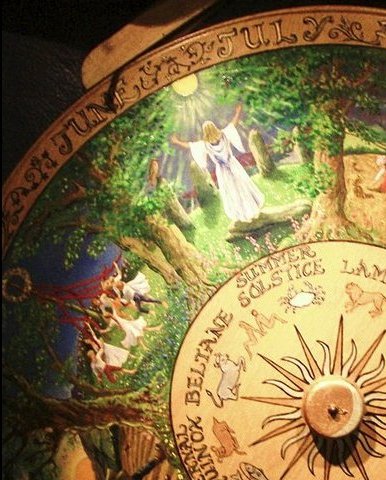

However, for modern scientific minds numbers should have
no character at all, they must be
arbitrary in order to avoid preconceptions. Therefore, it
would seem, Cartes du Ciel has
omitted to visualize the place of the
Crab Nebula (M 1):
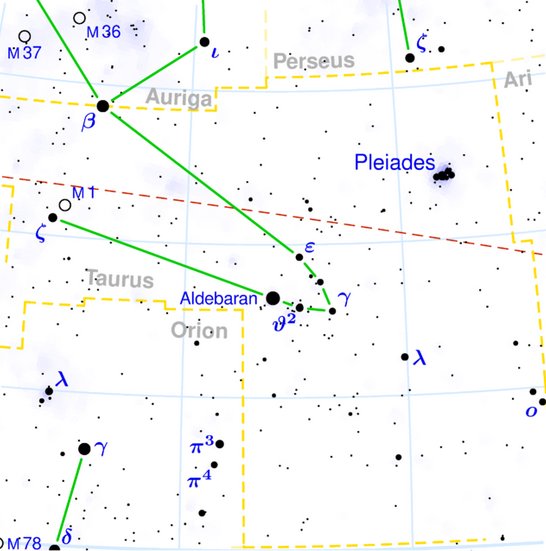
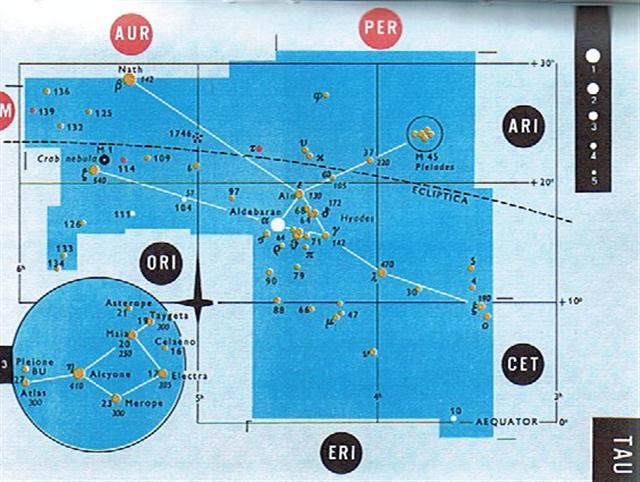
 |
|
Dec 11 (345) |
12 (122 + 183 + 41) |
Lucia
(121 + 226) |
 |
 |
 |
|
Cb3-7 (448) |
Cb3-8 (57) |
Cb3-9 (2 * 29, 350 + 100) |
|
ko te
maro - ko te tagata
|
kua hua
te tagata |
ko te
tagata |
|
KHUFU
MINTAKA (Belt) =
δ
Orionis,
υ
Orionis (82.4),
χ
Aurigae (82.5),
ε
Columbae (82.6)
*41.0 = *82.4 - *41.4
→ 41 Arietis (Bharani) |
KHAFRE
Al Hak'ah-3 (White Spot)
/
Mrigashīrsha-5 (Stag's Head)
/
Turtle
Head-20 (Monkey)
/
Mas-tab-ba-tur-tur (Little Twins)
ARNEB = α Leporis, CRAB NEBULA =
M1 Tauri (83.0),
φ¹
Orionis (83.1),
HEKA =
λ
Orionis, ORION NEBULA = M42
(83.2),
φ²
Orionis (83.6),
ALNILAM (String of Pearls) =
ε
Orionis
(83.7) |
MENKAURE
Three
Stars-21 (Gibbon)
/
Shur-narkabti-sha-shūtū-6 (Star
in the Bull towards the south)
/
ANA-IVA-9
(Pillar of exit)
HEAVENLY GATE =
ζ Tauri, ν Columbae
(84.0),
ω
Orionis (84.2),
ALNITAK (Girdle) =
ζ Orionis,
PHAKT (Phaet) =
α
Columbae
(84.7) |
|
"May 1 (121) |
2 |
3 (347 - 183 - 41) |
 |
.jpg)
|





.jpg)

















.jpg)